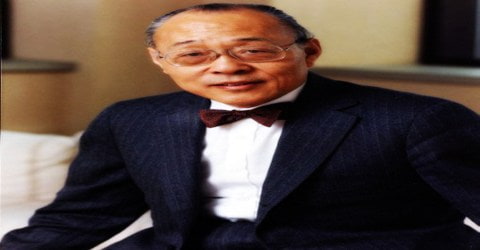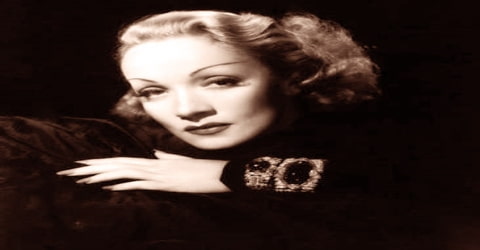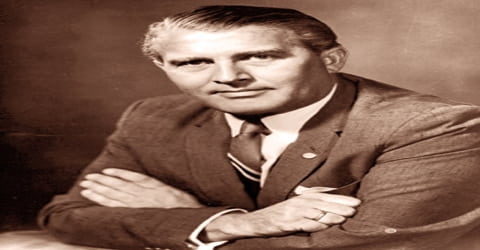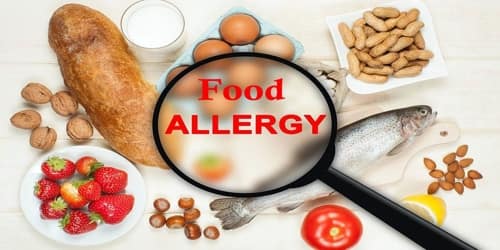George Best – Soccer Player (1946–2005)
Full name: George Best
Date of birth: May 22, 1946
Place of birth: Belfast, Northern Ireland
Date of death: November 25, 2005
Place of death : London, England
Nickname: The Belfast Boy
The Fifth Beatle
Height: 5 ft 9 in (1.75 m)
Playing position: Winger attacking midfielder
Early Life
George Best was born in East Belfast on 22nd May 1946. Even from a young age his parents, Dickie and Anne, recognized George’s love for football. His mother, reflecting on her son’s early life, passed the comment “with George it was always the ball!”
Certainly one of the greatest players to grace football boots in the UK sadly passed away quietly in 2005. He died of multiple organ failure after a lifetime of heavy drinking. In the 60s the “Beatle in shorts and football boots” was a well balanced ball-playing genius, the like of which the world had hardly ever seen. The Belfast Boy was discovered by a talent scout at age 15 and taken to Manchester United.
He helped United win the First Division title in 1965 and 1967, and in 1968 he led his club to a European Cup triumph. That year he also tied for the First Division lead in goals, and was named both the European Footballer of the Year and the FWA Footballer of the Year.
George Best was the first child of Richard “Dickie” Best (1919–2008) and Anne Best (née Withers; 1922–1978). His father was a member of the Orange Order and as a boy George carried the strings of the banner in his local Cregagh lodge. In his autobiography, Best mentioned how important the order was to his family. Best had four sisters, Carol, Barbara, Julie and Grace, and one brother, Ian (Ian Busby Best). Best’s father died on 16 April 2008, at the age of 88, in the Ulster Hospital in Dundonald, Northern Ireland. Best’s mother Anne died from alcoholism-related cardiovascular disease in 1978, at the age of 55.
Educational Life
In 1957, at the age of 11, the academically gifted Best passed the 11 plus and went to Grosvenor High School, but he soon played truant as the school specialised in rugby. Best then moved to Lisnasharragh Secondary School, reuniting him with friends from primary school and allowing him to focus on football. He grew up supporting Glentoran and Wolverhampton Wanderers.
At the age of 15, Best was discovered in Belfast by Manchester United scout Bob Bishop, whose telegram to United manager Matt Busby read: “I have found a genius.” His local club, Glentoran, had previously rejected him for being “too small and light.” Best was subsequently given a trial and signed up by chief scout Joe Armstrong. But the shy and home-sick youngster fled back to Ulster within 24 hours. He was finally persuaded to return and settled in at the club where he was befriended by United star Dennis Law.
Career
Though opponents would often use rough play to try to stifle his technical ability, Busby ensured that “fierce, sometimes brutal” training sessions left Best well used to coping with tough challenges. In the 1964–65 season, his first full season as a first team regular, Best helped Manchester United to claim the league title. A 1–0 victory at Elland Road proved decisive as the title race came down to goal average between the “Red Devils” and bitter rivals Leeds United; Leeds did manage to gain some measure of revenge though by knocking Manchester United out of the FA Cup at the semi-final stage. Over the course of the campaign Best contributed 14 goals in 59 competitive games. He scored the opening goal of the 1965 FA Charity Shield at Old Trafford, which ended in a 2–2 draw with Liverpool.
The rising star of English football, Best was catapulted to superstar status at the age of 19 when he scored two goals in a European Cup quarter-final match against Benfica at the Estádio da Luz on 9 March 1966. The Portuguese media dubbed him “O Quinto Beatle”, “the fifth Beatle” in English, and on the team’s return to England Best was photographed in his new sombrero with the headline, “El Beatle”. His talent and showmanship made him a crowd and media favourite, and he went from being headline news in the back pages to the front pages. Other nicknames included the “Belfast Boy”, and he was often referred to as Georgie, or Geordie in his native Belfast. However United failed to win any major honours in the 1965–66 season, and Best was injured from 26 March onwards with a twisted knee following a bad tackle from a Preston North End player. However United staff claimed it was light ligament damage so as to keep Best on the field for the rest of the campaign. He had little faith in the United medical staff, and so he secretly saw Glentoran’s physiotherapist, who readjusted his ligaments in a painful procedure. His last game of the season, his knee strapped-up, came on 13 April, and ended in a 2–0 defeat to Partizan Belgrade at Partizan Stadium.
Days after returning to England, as the First Division’s joint top-scorer (level on 28 goals with Southampton’s Ron Davies) Best was presented with the FWA Footballer of the Year award, becoming the youngest ever recipient of the award. Facing United in the European Cup Final at Wembley were Benfica; whilst his teammates rested, Best found “a novel way to relax” before the big game by sleeping with “a particular young lady called Sue”. The game went into extra-time, and just three minutes into extra-time Best went on a mazy run and beat goalkeeper José Henrique with a dummy, before rolling the ball into the net; two further goals from Brian Kidd and Bobby Charlton settled the tie at 4–1. The victory was not only the pinnacle of Best’s career, but arguably Manchester United’s greatest achievement, considering the Munich air disaster had wiped out most of the Busby Babes just ten years previously. Best also won the Ballon d’Or in 1968 after receiving more votes than Bobby Charlton, Dragan Džajić and Franz Beckenbauer. This meant that he had won the three major honours in club football at the age of just 22 (the league title, European Cup, and European Player of the Year award). After this, his steady decline began.
Best made 466 appearances for Manchester United in all competitions, scoring 178 goals. He was United’s top scorer for six consecutive seasons. During this run he also topped the first division scoring charts in 1967-68 with 28 goals, remarkable for a player who was not an out-and-out striker.
His “second team” after Manchester United is usually considered to be Fulham Football Club. Best had made a return to England after ‘retiring’ to the USA, where he played nine games with the San Jose Earthquakes, and still had his amazing skills, even though he had lost his pace slightly. Best scored some amazing goals for The Cottagers and is particularly remembered for tackling his “old drinking mate” Rodney Marsh in a FA Cup game against Hereford United (despite both being on the same team!). Best stated later that he enjoyed his time most while at Fulham, despite not winning any honors. He and Marsh later became an after-dinner act, telling jokes and stories about their playing days.
Personal life
He opened a nightclub called Slack Alice on Bootle Street in Manchester in 1973 and owned restaurants in the city including Oscars, on the site of the old Waldorf Hotel. He also owned fashion boutiques, in partnership with Mike Summerbee. Best’s cousin Gary Reid, a member of the Ulster Defence Association, was killed in 1974 during an episode of serious rioting in east Belfast.
Best married Angela MacDonald-Janes on 24 January 1978 at Candlelight Wedding Chapel in Las Vegas, having met in the United States when Best was playing for the Los Angeles Aztecs. Their son, Calum, was born in 1981, but they separated the following year and divorced in 1986. His niece by marriage is actress Samantha Janus, who is the daughter of Angie MacDonald-Janes’ brother.
He married Alex Pursey in 1995 in Kensington and Chelsea, London. They divorced in 2004; they had no children. In 2004 she alleged that Best was violent towards her during their marriage, an issue that was, in fact, covered in Best’s authorised 1998 biography “Bestie” in which Alex claimed that Best punched her in the face on more than one occasion. Earlier in the book it is revealed that he struck another of his girlfriends at least once and was arrested and charged with assault on a waitress, Stevie Sloniecka, in November 1972, when he fractured her nose in Reuben’s nightclub, Manchester. He was successfully defended when the case reached court in January 1973 by barrister George Carman QC, a close drinking companion of Best, as acknowledged in his book, Scoring at Half Time.
Best had a cameo as himself in the 1971 British comedy film Percy. In 1984 he made a fitness album with Mary Stävin called Shape Up and Dance. A biographical film entitled Best was released in May 2000, with John Lynch portraying George Best. Indie rock band The Wedding Present named their first album George Best, and featured Best on the cover wearing his red Manchester United kit. After his death, Brian Kennedy and Peter Corry released a single entitled George Best – A Tribute. Best features in EA Sports’ FIFA video game series; he was included in the FIFA 16 Ultimate Team Legends.
Convictions
In 1984, Best received a three-month prison sentence for drunk driving, assaulting a police officer and failing to answer bail. He spent Christmas of 1984 behind bars and turned out as a player for Ford Open Prison. On February 2, 2004, Best was convicted of another drunk driving offense and banned from driving for 20 months.
Alcoholism
Best developed a drinking problem while still a player, and it contributed to his early retirement from top-level football. It was the “Swinging Sixties” and he loved the night-life and visiting the night-clubs around Manchester, and also in London. He was unable to give up alcohol for any length of time. In September 1990, Best appeared on an edition of primetime BBC chat show Wogan in which he swore and was clearly drunk. He later apologized and said this was one of the worst episodes of his alcoholism.
Best was diagnosed with severe liver damage in March 2000. In 2001, he was admitted to hospital with pneumonia. In August 2002, he had a successful liver transplant at King’s College Hospital in London. The transplant was performed at public expense on the NHS, a decision which was controversial due to Best’s alcoholism. The controversy was reignited in 2003 when he was spotted openly drinking white wine spritzers.
Death
Best continued to drink, and was sometimes seen at his local pub in Petersfield, Hampshire. On October 3, 2005 Best was admitted to intensive care at the private Cromwell Hospital in London, suffering from kidney problems caused by the side-effects of immuno-suppressive drugs used to prevent his body from rejecting his transplanted liver. On November 20, the British tabloid News of the World published a picture of Best at his own request, showing him in his hospital bed, along with what was reported to be his final message: “Don’t die like me.” Of the many tributes left to George near his hospital bed, one was a signed football which read: “From the second best player in the world.” It was signed by Pelé, the man many people consider to be the greatest player ever to play the game. In the early hours of November 25, 2005, Best’s treatment was stopped; he eventually died, after a battle that lasted longer than doctors had expected from a lung infection and multiple organ failure. His father, four sisters, brother, son Calum and his agent and friend, Phil Hughes, were all at his bedside, as was his former United team-mate Denis Law. The FA Premier League announced that a minute’s silence would be observed before all Premiership games to be held over the weekend of his death, however, this tradition was ignored at many grounds, in favor of a minute’s applause in his honor. The first match at Old Trafford after Best’s death was a League Cup tie against West Bromwich Albion, the club against which he made his debut for Manchester United in 1963. The match was preceded by tributes from former team-mate Sir Bobby Charlton, and Best’s son Callum and former team-mates, surviving members from the West Bromwich Albion team which he played against in his debut. Many football supporters traveled to pay tribute to Best outside Manchester United’s stadium Old Trafford, Windsor Park in Belfast and at Belfast City Hall and outside his father’s home where they left signed shirts, scarves, flowers and messages.
Memorials
Belfast City Airport was renamed George Best Belfast City Airport as a tribute to Best. The official new name and signage was unveiled to a gathering of the Best family and friends at the airport on 22 May 2006, which would have been his 60th birthday.
Public opinion in Northern Ireland about the renaming of the airport was divided, with one poll showing 52% in favour and 48% against. Democratic Unionist Party (DUP) deputy leader and East Belfast Member of Parliament Peter Robinson, in whose constituency Belfast City airport is situated, stated that his preference was a sports stadium be named after Best.
In March 2006, Flybe, the airport’s biggest operator, named a Dash-8 plane G-JECL The George Best. The specially branded Q400 aircraft was used to carry Best’s family across to the Manchester memorial service for Best. On the 60th birthday anniversary, 22 May 2006, a special gala dinner was held in George’s honor at Belfast City Hall, and an auction was held to raise funds for the George Best Foundation. One of the items featured was the ‘Genius’ egg from the world famous jewelers Fabergé. All profits from the sale of the eggs will be donated to the George Best Foundation. For the first anniversary of his death, Ulster Bank issued one million commemorative five pound notes. The notes were sold out in three days.
Appearances and goals for each club
- Pre -1963 – Cregagh Rangers Boys Club
- 1963-1974 – Manchester United: 466 games, 178 goals, (Football League First Division 361/137, FA Cup 46/21, Football League Cup 25/9, International club football 34/11)
- 1974 – Jewish Guild of Johannesburg: 5 games
- 1975 – Dunstable Town (friendlies)
- 1975 – Stockport County: 3 games, 2 goals
- 1976 – Cork Celtic: 3 games, 0 goals
- 1976 – Los Angeles Aztecs: 24 games, 15 goals (NASL)
- 1976-1977 – Fulham: 47 games, 10 goals
- 1977-1978 – Los Angeles Aztecs: 37 games, 14 goals (NASL)
- 1978-1979 – Fort Lauderdale Strikers: 33 games, 7 goals (NASL)
- 1979-1980 – Hibernian: 22 games, 3 goals
- 1980-1981 – San Jose Earthquakes (NASL team): 56 games, 21 goals (NASL)
- 1983 – Bournemouth: 5 games, 0 goals
- 1983 – Brisbane Lions: 4 games, 0 goals
- 1984 – Tobermore United: 1 game, 0 goals
- International: 1964-1978 – Northern Ireland national team: 37 games, 9 goals
Honours
Club
Manchester United
- FA Youth Cup: 1964
- Football League First Division (2): 1964–65 & 1966–67
- Charity Shield (2): 1965, 1967
- European Cup: 1968
Individual
- Football League First Division Top Scorer: 1967–68[124]
- FWA Footballer of the Year: 1967–68
- Ballon d’Or: 1968; Third place 1971
- PFA Team of the Year Second Division: 1977
- Football League 100 Legends: 1983
- Honorary doctorate from Queen’s University Belfast: 2001
- Freeman of Castlereagh: 2002
- Inaugural inductee into the English Football Hall of Fame: 2002
- BBC Sports Personality of the Year Lifetime Achievement Award: 2002
- UEFA Jubilee Awards – Northern Ireland’s Golden Player: 2003
- FIFA 100
- Golden Foot: 2005
- PFA Merit Award: 2006
- PFA England League Team of the Century (1907 to 2007).
- FWA Tribute Award: 2007
- European Hall of Fame (Player): 2008
















